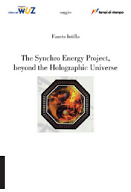
ScienceDaily (Mar. 11, 2009) — Scientists in Switzerland are reporting an advance that could help tap the much-heralded potential of "quantum dots"— nanocrystals that glow when exposed to ultraviolet light — in the treatment of cancer and other diseases.
They are publishing the first study showing that giving quantum dots an icing-like cap of certain sugars makes these nanoparticles accumulate in the liver but not other parts of the body. That selective targeting could be used to deliver anti-cancer drugs to one organ, without causing the body-wide side-effects that occur with existing cancer drugs, they suggest.
Their study is in the Feb. 18 issue of the Journal of the American Chemical Society, a weekly publication.
In the new report, Peter H. Seeberger and colleagues note that quantum dots, about 1/5,000th the width of a human hair, are used in solar cells, medical diagnostic imaging, and electronics. Scientists believe these particles also show promise for drug delivery for treating cancer and other diseases. However, researchers still have not found an ideal way to target these dots to specific tissues or organs in order to maximize their effectiveness and limit toxicity.
They describe development of a new type of quantum dot coated with certain sugar molecules that are attracted to receptors in specific tissues and organs. In a study with laboratory mice, the scientists coated quantum dots with either mannose or galactosamine, two sugars that accumulate selectively in the liver. The sugar-coated dots became three times more concentrated in the mice livers than the regular dots, demonstrating their higher specificity, the researchers say.
Journal reference:
Kikkeri et al. In Vitro Imaging and in Vivo Liver Targeting with Carbohydrate Capped Quantum Dots. Journal of the American Chemical Society, 2009; 131 (6): 2110 DOI: 10.1021/ja807711w
Adapted from materials provided by American Chemical Society, via EurekAlert!, a service of AAAS.
Their study is in the Feb. 18 issue of the Journal of the American Chemical Society, a weekly publication.
In the new report, Peter H. Seeberger and colleagues note that quantum dots, about 1/5,000th the width of a human hair, are used in solar cells, medical diagnostic imaging, and electronics. Scientists believe these particles also show promise for drug delivery for treating cancer and other diseases. However, researchers still have not found an ideal way to target these dots to specific tissues or organs in order to maximize their effectiveness and limit toxicity.
They describe development of a new type of quantum dot coated with certain sugar molecules that are attracted to receptors in specific tissues and organs. In a study with laboratory mice, the scientists coated quantum dots with either mannose or galactosamine, two sugars that accumulate selectively in the liver. The sugar-coated dots became three times more concentrated in the mice livers than the regular dots, demonstrating their higher specificity, the researchers say.
Journal reference:
Kikkeri et al. In Vitro Imaging and in Vivo Liver Targeting with Carbohydrate Capped Quantum Dots. Journal of the American Chemical Society, 2009; 131 (6): 2110 DOI: 10.1021/ja807711w
Adapted from materials provided by American Chemical Society, via EurekAlert!, a service of AAAS.















Nessun commento:
Posta un commento